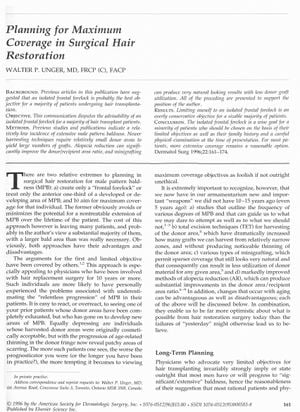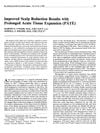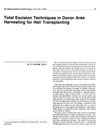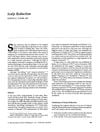Planning for Maximum Coverage in Surgical Hair Restoration
February 1996
in “
Dermatologic Surgery
”

TLDR Walter P. Unger suggests using advanced hair transplant techniques for broader coverage, as they provide natural results and use donor tissue efficiently, while also recommending personalized planning due to the unpredictable progression of baldness.
In the 1996 paper, Walter P. Unger, MD, challenges the conservative approach of aiming for an isolated frontal forelock in hair transplant patients, advocating for more extensive coverage due to low incidence of extensive male pattern baldness and advancements in hair transplant techniques. Unger highlights the benefits of micrografts and minigrafts, which provide natural-looking results and conserve donor tissue. A study of 328 men aged 65 or older supports the idea of a "safe" donor area for multiple hair transplantation sessions. The paper also discusses the advantages of alopecia reduction (AR), which optimizes the donor/recipient area ratio and improves the appearance of hair, arguing against the notion that AR accelerates future hair loss. Unger suggests that most surgeons will find a balance between total coverage and the isolated frontal forelock, with the prospects for treating male pattern baldness (MPB) having improved due to new harvesting and AR techniques. However, the paper also acknowledges the progressive nature of MPB, the potential for stretchback, and the difficulty in predicting who will become severely bald, emphasizing the need for individualized patient planning in surgical hair restoration.



